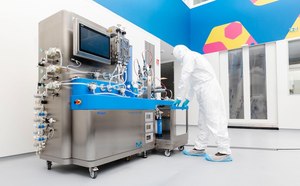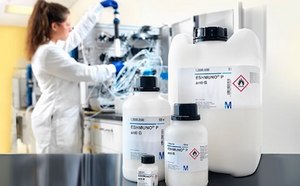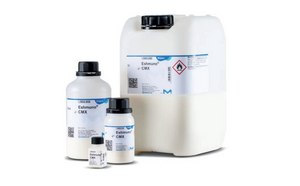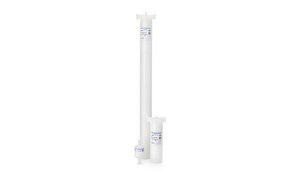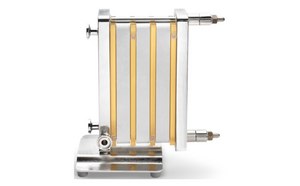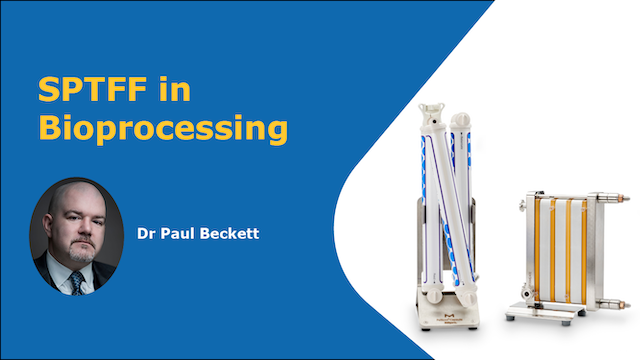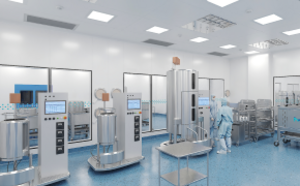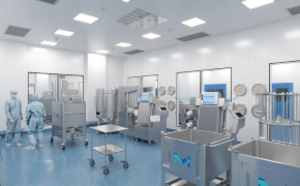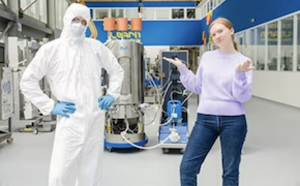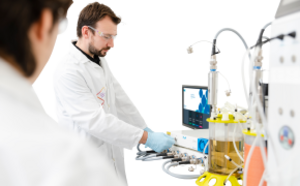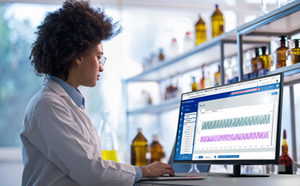Intensified and Continuous Downstream Processing
Gain operational efficiency and flexibility while reducing footprint and costs
Looking to increase your downstream process efficiency?
In the processing of monoclonal antibodies (mAbs), polishing chromatography plays a crucial role in eliminating impurities after capture chromatography and viral inactivation. Chromatography resins effectively separate target molecules from impurities using either bind-elute or flow-through modes, and provide high binding capacity with various ligands tailored for specific molecule separation. Newer membrane technologies offer improved flexibility in a convenient single-use format that provides high flow rates and binding to boost productivity. For continuous processes, flow through cation exchange technologies such as Eshmuno® CP-FT resin and Natrix® CH chromatography membrane devices eliminates bottlenecks and offers an efficient alternative to bind-elute purification.
Process intensification, closed, and continuous bioprocessing are foundational strategies for achieving these goals. They are widely and successfully deployed in the downstream suite to be more efficient, faster, smaller, less expensive, and sustainable.
To help biopharmaceutical manufacturers intensify, closing, digitally-enhance, or go fully continuous with their processes and gain new levels of operational efficiency and flexibility, there are multiple levers within the DSP suite.
Flow-Through Polishing Chromatography
Polishing chromatography occurs post viral inactivation of mAb downstream processing to remove any remaining impurities from the monoclonal antibody feed stream. In traditional batch processes, polishing steps comprise nearly 25% of the cost of production. Integrating individual polishing steps into a single, continuous flow-through process delivers increased efficiency and yields while reducing costs by up to 10%. This intensified approach lowers the overall footprint through the elimination of intermediate hold tanks, buffer consumption reduction, and the removal of product dilution steps. Overhead costs such as operator intervention are further reduced by the integration of process control systems.
- Natrix® CH Chromatography Membrane offers excellent removal of aggregates and impurities in frontal chromatography mode. With high load capacities (up to 1000 g/L) and ultra-fast flow rates, this scalable, single-use device improves productivity and streamlines intensified purification while improving process economics.
- Natrix® Q Chromatography Membrane is a high capacity, high throughput strong anion exchange membrane adsorber designed for efficient impurity removal in flow through mode. The scalable, single-use format improves your productivity, flexibility, economic utility and process robustness.
- Eshmuno® CP-FT Resin is designed to provide efficient removal of mAb aggregates in the flow-through frontal chromatography mode of operation enabling loading capacities 10× higher than traditional bind/elute CEX chromatography.
Related Categories
Single-use and multi-use chromatography systems are critical for the separation of your valuable molecules.
Affinity chromatography is often used during the capture phase to isolate the target molecule and reduce process volume.
Ion exchange (IEX) chromatography separates biomolecules based on difference in charge between the target molecule and chromatography resin.
Optimize downstream purification using membrane chromatography for capture and polishing. Natrix membranes boost economics and facility efficiency.
Elevate Filtration Precision: Our tangential flow products ensure purity for mAbs, vaccines, and more, scaling from single-use to multi-use.
Related Resources
- White Paper: Flow-Through Polishing Process Development: A Holistic Approach
In this white paper, we describe development and evaluation of a flow-through polishing step, which is critical for the evolution towards a continuous process.
- Article: What is Multi Column Chromatography?
In this article, we will discuss one of the methods used to intensify the capture chromatography process: multi column chromatography (MCC).
- Data Sheet: Mobius® Multi Column Capture System
The Mobius® Multi Column Capture system is designed as a fully automated, single-use solution to operate continuous closed capture chromatography.
- Application Note: Multi Column Capture
Results from the multi-column capture (MCC) system implementation as part of a fully integrated downstream continuous manufacturing platform are reported in this application note.
- Application Note: Intensified Polishing Using Single-Pass Tangential Flow Filtration (SPTFF) with Anion Exchange Chromatography
In this application note, SPTFF preconcentration is used to intensify the anion exchange (AEX) polishing step in monoclonal antibody (mAb) processing for improved impurity removal and column productivity.
Related Webinars
Improve your process efficiency and reduce costs.
BioContinuum™ Platform: Your enabler of the biomanufacturing facility of the future!
To continue reading please sign in or create an account.
Don't Have An Account?